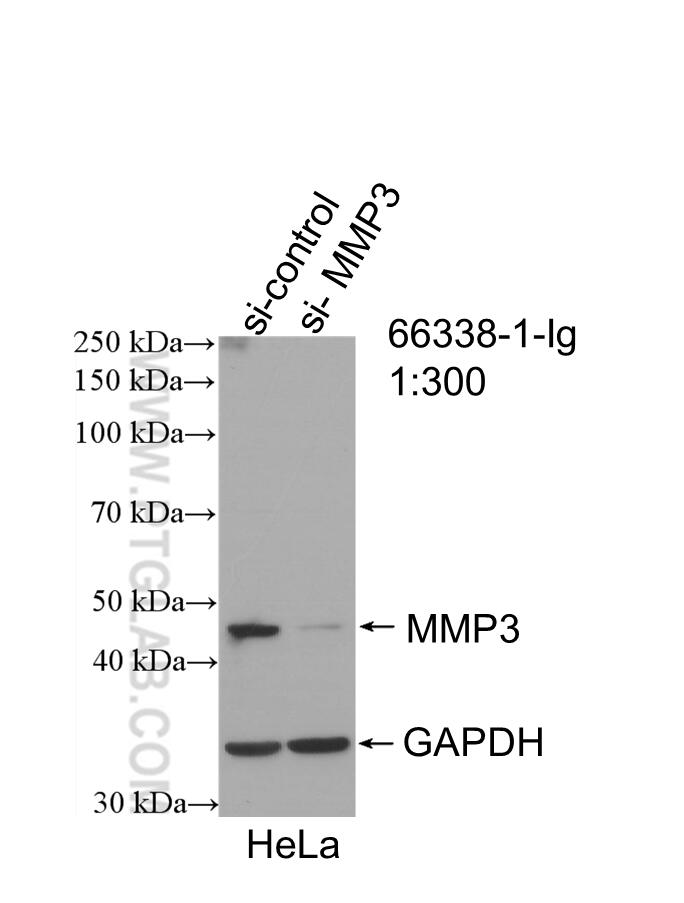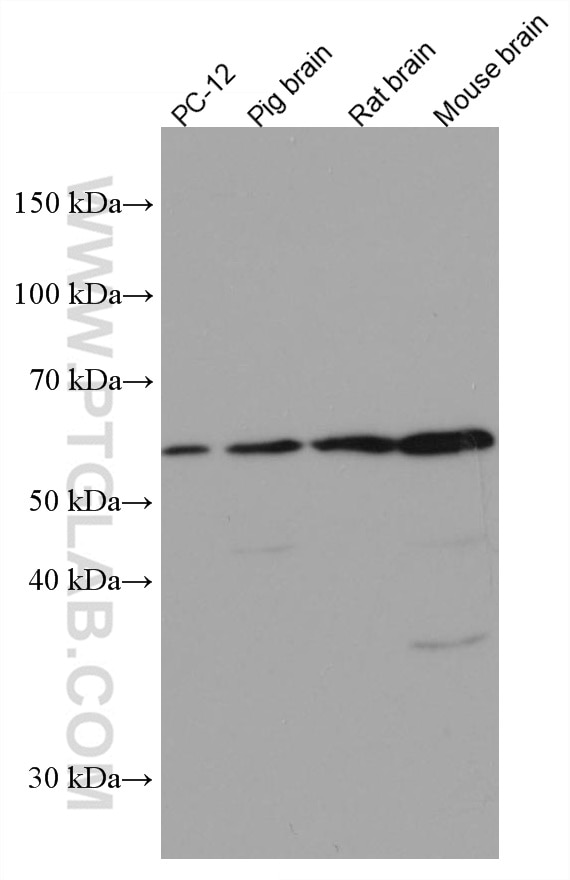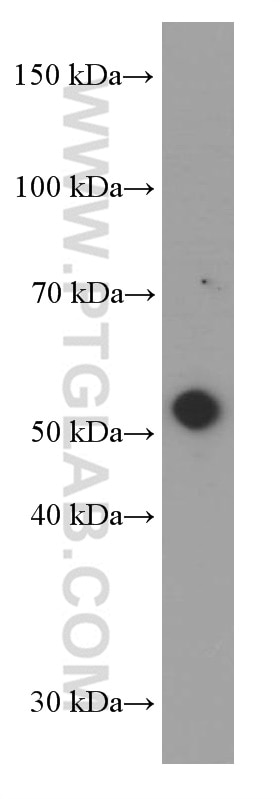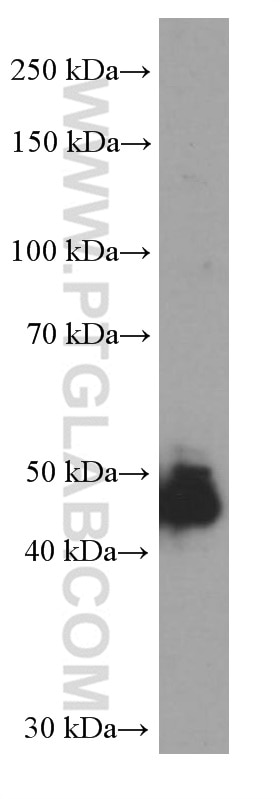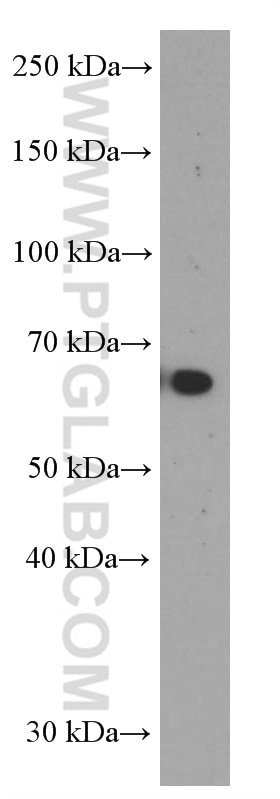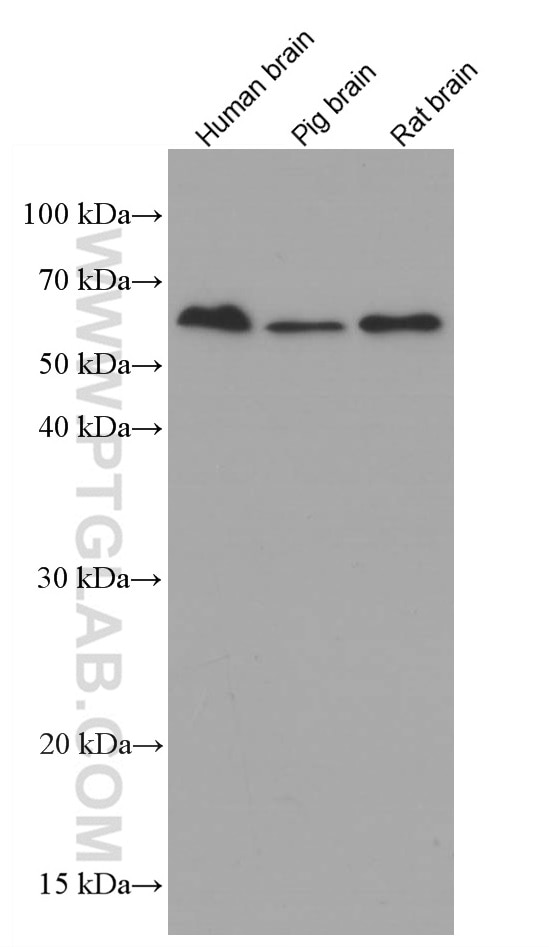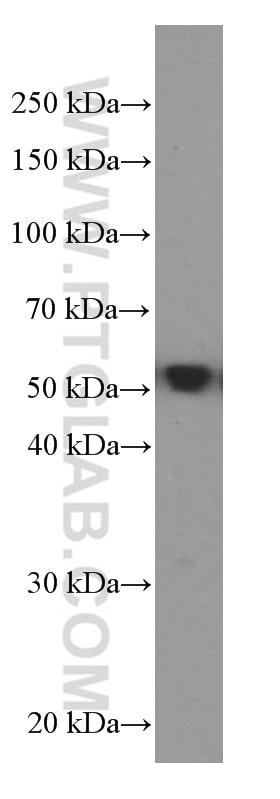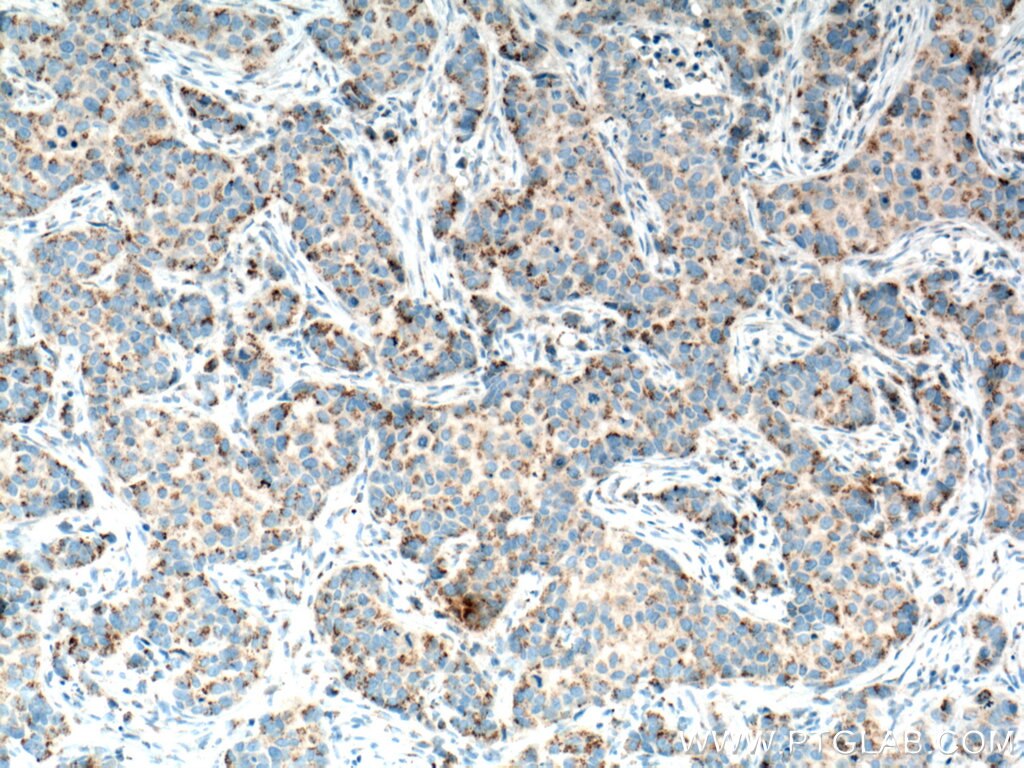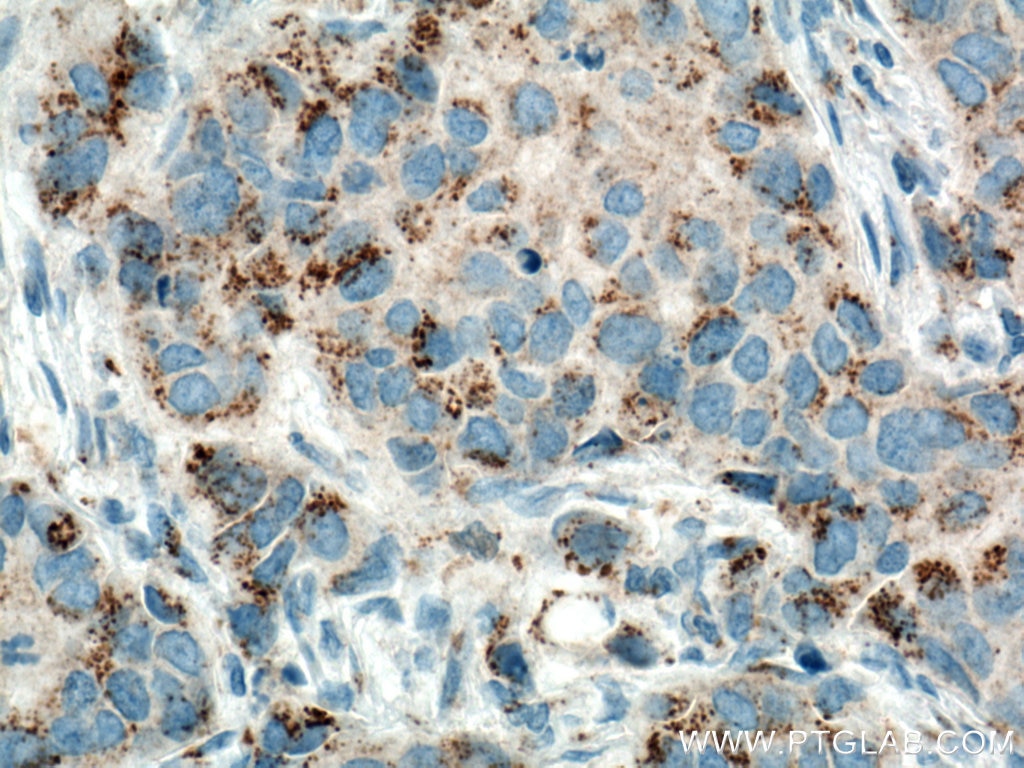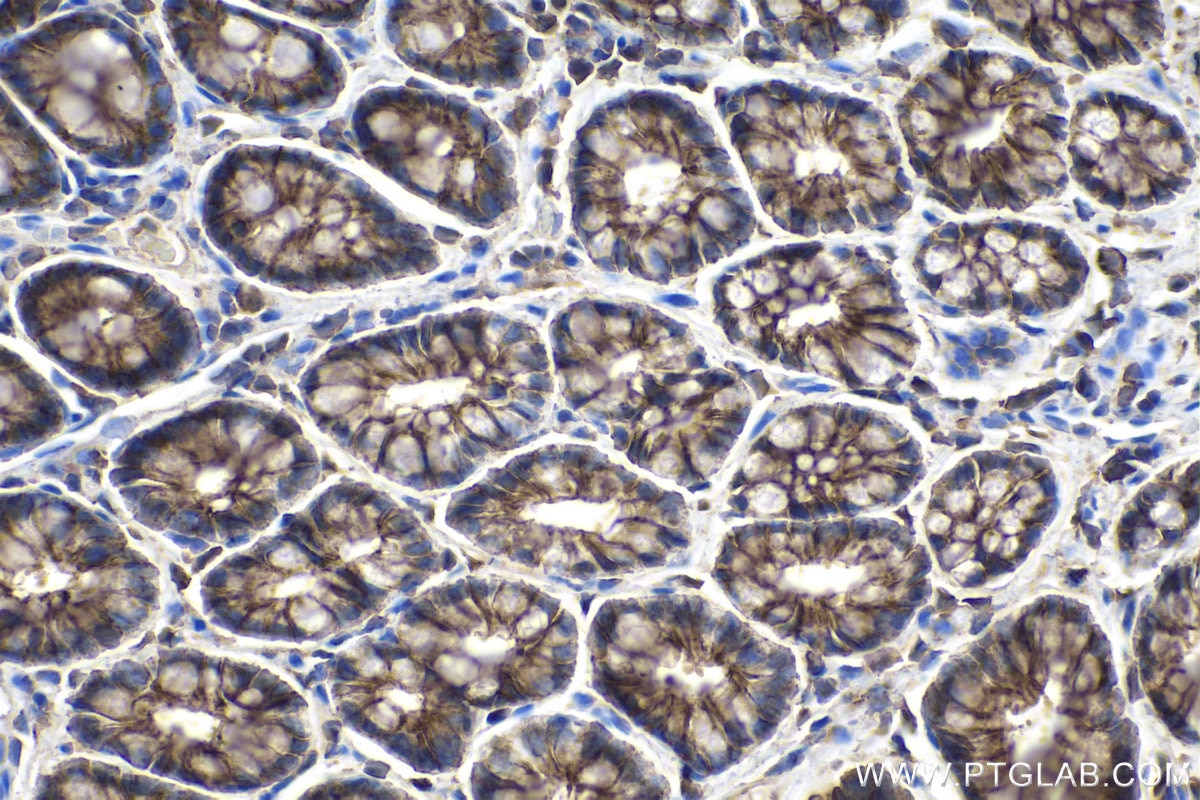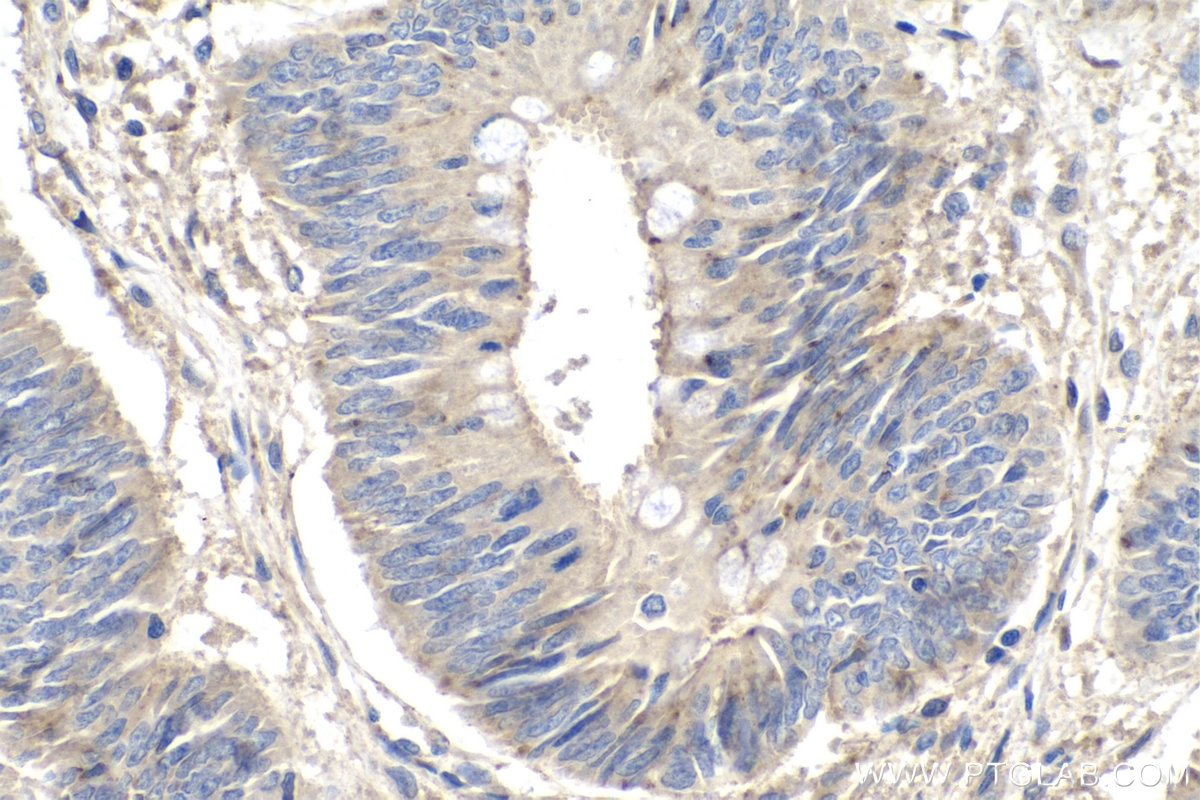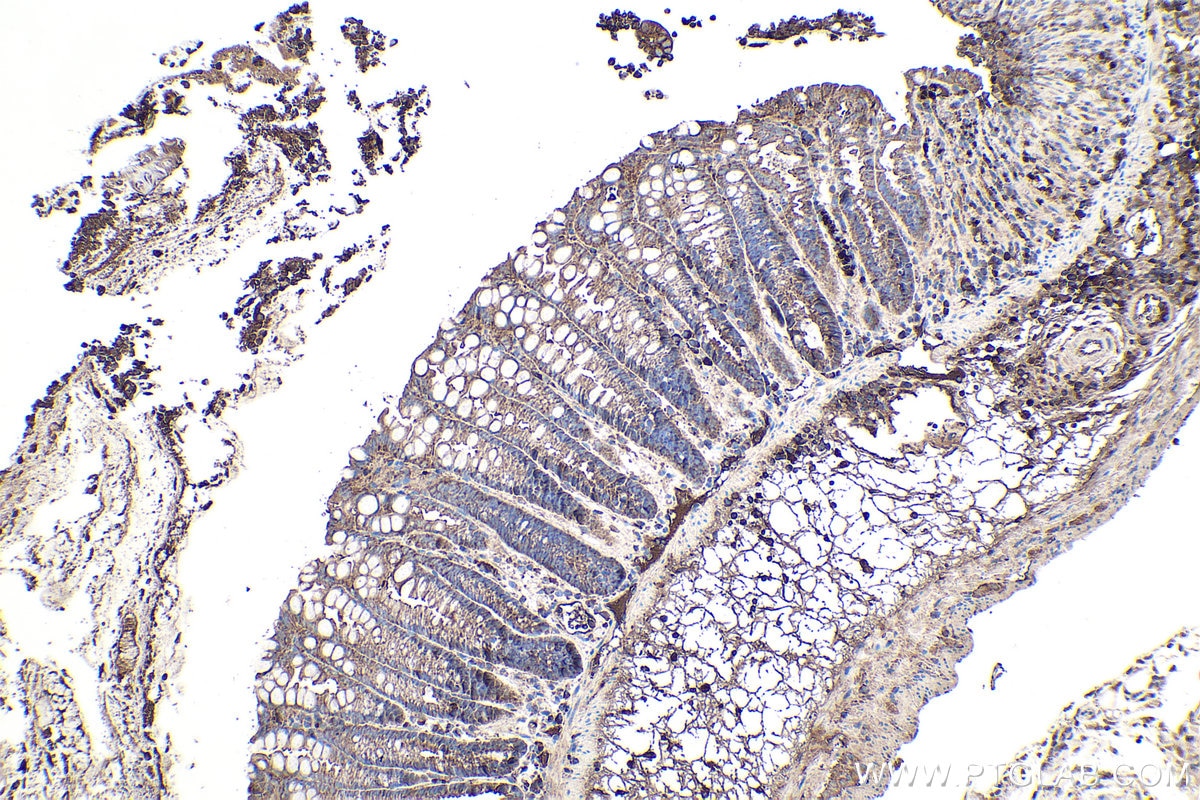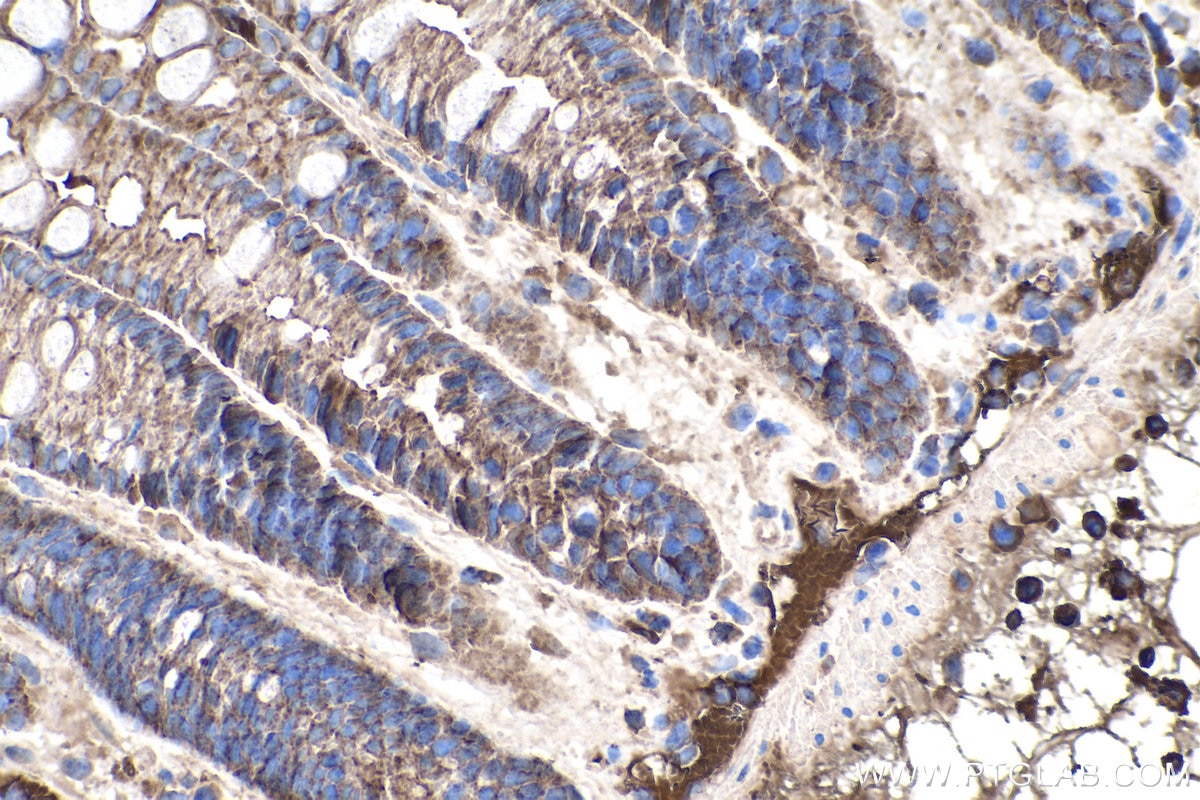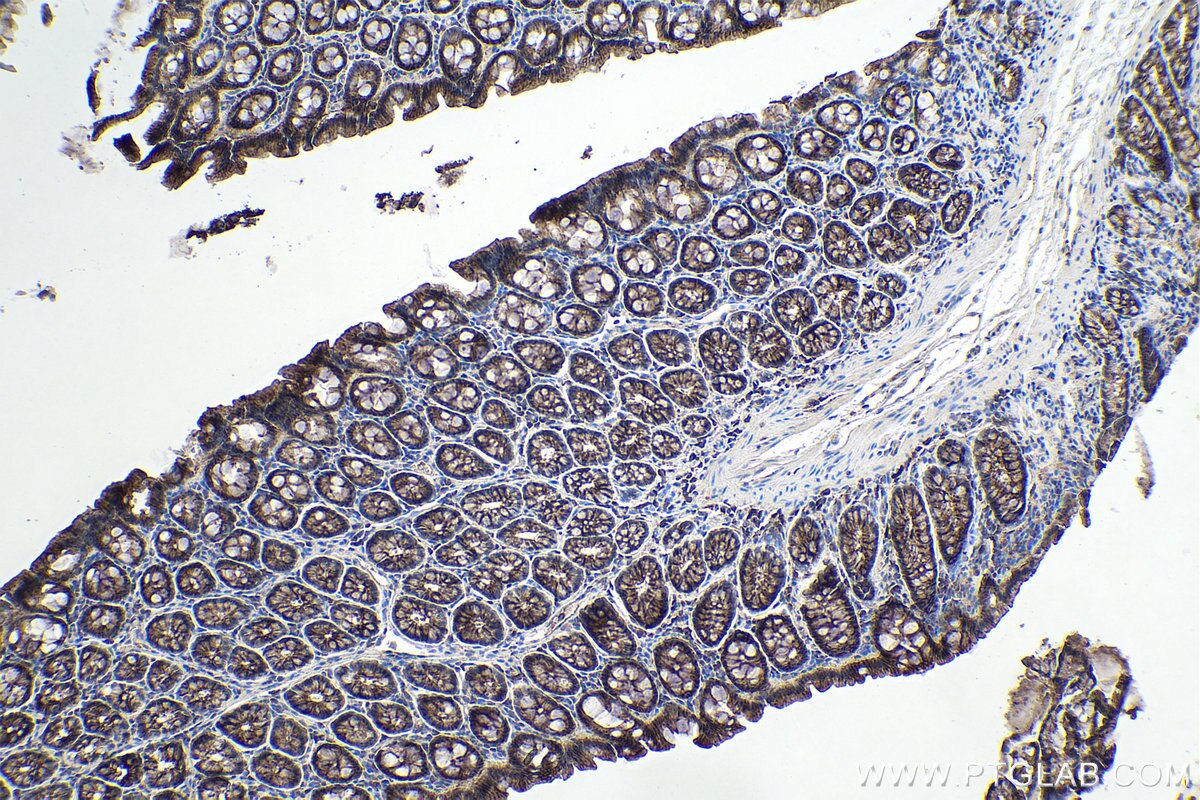- Featured Product
- KD/KO Validated
MMP3 Monoklonaler Antikörper
MMP3 Monoklonal Antikörper für WB, IHC, IF/ICC, ELISA
Wirt / Isotyp
Maus / IgG1
Getestete Reaktivität
Hausschwein, human, Maus, Ratte und mehr (1)
Anwendung
WB, IHC, IF/ICC, ELISA
Konjugation
Unkonjugiert
CloneNo.
1F5A9
Kat-Nr. : 66338-1-Ig
Synonyme
Geprüfte Anwendungen
| Erfolgreiche Detektion in WB | PC-12-Zellen, Caco-2-Zellen, COLO 320-Zellen, fetales humanes Hirngewebe, HeLa-Zellen, humanes Herzgewebe, Maushirngewebe, Hausschwein-Hirngewebe, Hausschwein-Herzgewebe, Rattenhirngewebe |
| Erfolgreiche Detektion in IHC | humanes Mammakarzinomgewebe, humanes Kolonkarzinomgewebe, Maus-Kolongewebe, Ratten-Kolongewebe Hinweis: Antigendemaskierung mit TE-Puffer pH 9,0 empfohlen. (*) Wahlweise kann die Antigendemaskierung auch mit Citratpuffer pH 6,0 erfolgen. |
| Erfolgreiche Detektion in IF/ICC | A549-Zellen |
Empfohlene Verdünnung
| Anwendung | Verdünnung |
|---|---|
| Western Blot (WB) | WB : 1:5000-1:50000 |
| Immunhistochemie (IHC) | IHC : 1:500-1:2000 |
| Immunfluoreszenz (IF)/ICC | IF/ICC : 1:200-1:800 |
| It is recommended that this reagent should be titrated in each testing system to obtain optimal results. | |
| Sample-dependent, check data in validation data gallery | |
Veröffentlichte Anwendungen
| KD/KO | See 1 publications below |
| WB | See 44 publications below |
| IHC | See 10 publications below |
| IF | See 7 publications below |
Produktinformation
66338-1-Ig bindet in WB, IHC, IF/ICC, ELISA MMP3 und zeigt Reaktivität mit Hausschwein, human, Maus, Ratten
| Getestete Reaktivität | Hausschwein, human, Maus, Ratte |
| In Publikationen genannte Reaktivität | human, Affe, Hausschwein, Maus, Ratte |
| Wirt / Isotyp | Maus / IgG1 |
| Klonalität | Monoklonal |
| Typ | Antikörper |
| Immunogen | MMP3 fusion protein Ag12359 |
| Vollständiger Name | matrix metallopeptidase 3 (stromelysin 1, progelatinase) |
| Berechnetes Molekulargewicht | 477 aa, 54 kDa |
| Beobachtetes Molekulargewicht | 45-60 kDa |
| GenBank-Zugangsnummer | BC074869 |
| Gene symbol | MMP3 |
| Gene ID (NCBI) | 4314 |
| Konjugation | Unkonjugiert |
| Form | Liquid |
| Reinigungsmethode | Protein-G-Reinigung |
| Lagerungspuffer | PBS with 0.02% sodium azide and 50% glycerol |
| Lagerungsbedingungen | Bei -20°C lagern. Nach dem Versand ein Jahr lang stabil Aliquotieren ist bei -20oC Lagerung nicht notwendig. 20ul Größen enthalten 0,1% BSA. |
Hintergrundinformationen
Matrix metalloproteinases (MMPs) play a critically important role in extracellular matrix remodeling and have been implicated in a number of key normal and pathologic processes.These proteases have come to represent important therapeutic and diagnostic targets for the treatment and detection of human cancers. MMP-3 activate procollagenase via two pathways: slow direct activation and rapid activation in conjunction with tissue or plasma proteinases. The pro-MMP3 (60 kDa) and the active MMP3 (47 kDa) can be detected through western blot.
Protokolle
| PRODUKTSPEZIFISCHE PROTOKOLLE | |
|---|---|
| WB protocol for MMP3 antibody 66338-1-Ig | Protokoll herunterladen |
| IHC protocol for MMP3 antibody 66338-1-Ig | Protokoll herunterladenl |
| IF protocol for MMP3 antibody 66338-1-Ig | Protokoll herunterladen |
| STANDARD-PROTOKOLLE | |
|---|---|
| Klicken Sie hier, um unsere Standardprotokolle anzuzeigen |
Publikationen
| Species | Application | Title |
|---|---|---|
Adv Sci (Weinh) Inflammatory Fibroblast-Like Synoviocyte-Derived Exosomes Aggravate Osteoarthritis via Enhancing Macrophage Glycolysis | ||
Biomaterials Macromechanics and polycaprolactone fiber organization drive macrophage polarization and regulate inflammatory activation of tendon in vitro and in vivo. | ||
J Nanobiotechnology Low-dose celecoxib-loaded PCL fibers reverse intervertebral disc degeneration by up-regulating CHSY3 expression | ||
Acta Pharmacol Sin Methylene blue prevents osteoarthritis progression and relieves pain in rats via upregulation of Nrf2/PRDX1. | ||
Aging (Albany NY) ASIC1 and ASIC3 mediate cellular senescence of human nucleus pulposus mesenchymal stem cells during intervertebral disc degeneration. | ||
